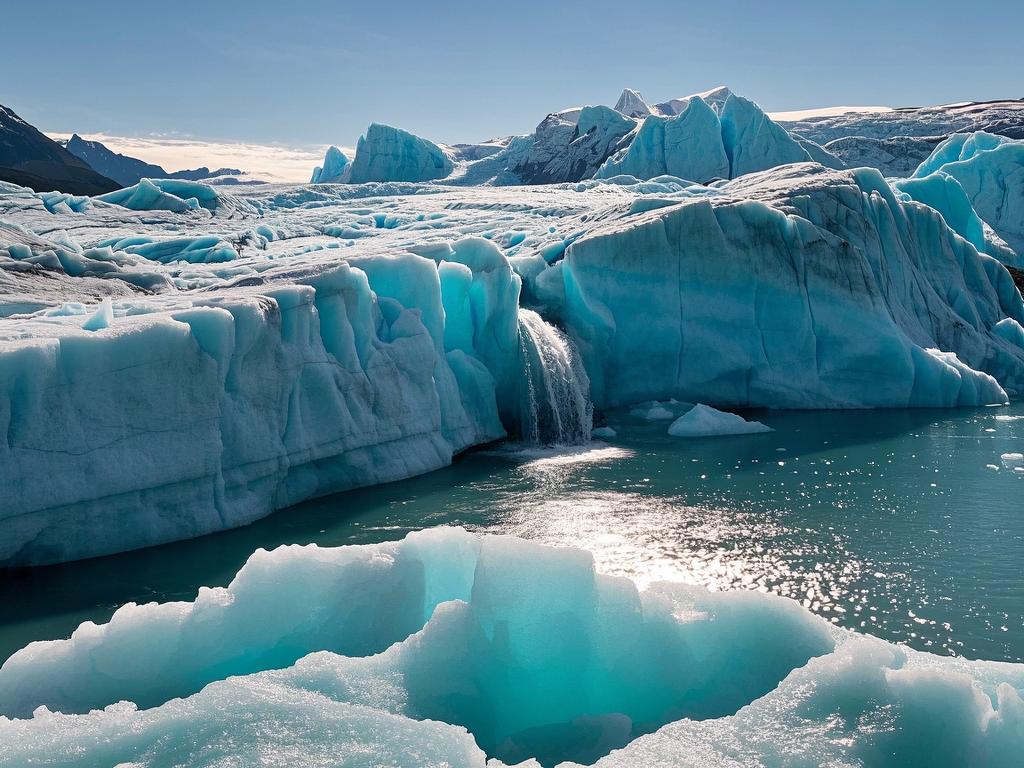
# The Majestic Glaciers of Patagonia: Melting Memories of a Frozen Past
Hey there, fellow adventurers and nature enthusiasts! Today, I want to take you on a journey to one of the most awe-inspiring places on Earth - the majestic glaciers of Patagonia. These frozen giants are not just chunks of ice; they are living, breathing entities that have shaped the landscape for millennia. But sadly, they are also disappearing at an alarming rate, melting away like memories of a frozen past.
## A Brief History of Patagonia's Glaciers Patagonia, located at the southern tip of South America, is home to some of the largest and most spectacular glaciers in the world. These glaciers were formed over millions of years as snow accumulated and compressed, turning into ice. They cover vast areas of land, stretching for hundreds of kilometers and reaching depths of up to several hundred meters.
One of the most famous glaciers in Patagonia is the Perito Moreno Glacier in Argentina. This massive glacier is over 30 kilometers long and 50 meters high, and it is one of the few glaciers in the world that is still growing. Another notable glacier is the Upsala Glacier in Chile, which is the largest glacier in South America and one of the most active.
## The Beauty and Majesty of Patagonia's Glaciers The glaciers of Patagonia are truly a sight to behold. Their towering ice walls, crevasses, and icebergs are a testament to the power and beauty of nature. Standing in front of these glaciers, you can feel the raw energy and force of the ice as it moves and calves, breaking off into massive chunks that float away into the sea.
But the beauty of Patagonia's glaciers is not just skin deep. These glaciers also play a crucial role in the ecosystem, providing freshwater for millions of people, regulating the climate, and supporting a diverse range of plant and animal life. They are home to unique species of penguins, seals, whales, and other marine mammals, as well as a variety of birds and fish.
## The Threat of Climate Change Despite their beauty and importance, the glaciers of Patagonia are under threat from climate change. Rising temperatures are causing the glaciers to melt at an accelerating rate, and scientists predict that they could disappear completely within the next few decades. This would have a devastating impact on the ecosystem, as well as on the people who depend on the glaciers for water, tourism, and other resources.
One of the main drivers of climate change in Patagonia is the increase in greenhouse gas emissions from human activities, such as burning fossil fuels and deforestation. These emissions trap heat in the atmosphere, causing the Earth's temperature to rise and leading to a range of environmental problems, including melting glaciers, rising sea levels, and more frequent and severe weather events.
## The Impact on the Ecosystem The melting of the glaciers in Patagonia is having a profound impact on the ecosystem. As the glaciers retreat, they are leaving behind bare rock and soil, which can take hundreds of years to recover. This is leading to a loss of biodiversity, as many species that depend on the glaciers for habitat and food are forced to migrate or go extinct.
In addition, the melting glaciers are causing sea levels to rise, which is threatening coastal communities and infrastructure. The increased runoff from the glaciers is also changing the chemistry of the ocean, making it more acidic and harmful to marine life. This is having a cascading effect on the entire food chain, from plankton to whales.
## The Impact on Human Communities The melting of the glaciers in Patagonia is not just an environmental problem; it is also a human problem. Millions of people depend on the glaciers for water, and as the glaciers disappear, water scarcity is becoming a growing concern. In addition, the tourism industry in Patagonia is heavily reliant on the glaciers, and as they melt, tourism revenues are likely to decline.
The melting glaciers are also having a social and cultural impact on the people who live in Patagonia. These glaciers are an important part of the region's heritage and identity, and their disappearance is causing a sense of loss and grief among the local communities. Many people are also concerned about the impact of climate change on future generations, and are calling for action to reduce greenhouse gas emissions and protect the environment.
## What Can We Do? The melting of the glaciers in Patagonia is a global problem that requires a global solution. We all have a role to play in reducing greenhouse gas emissions and protecting the environment. Here are some things we can do: - Reduce our carbon footprint by using renewable energy, conserving energy and water, and reducing waste. - Support policies and initiatives that promote sustainable development and climate action. - Educate ourselves and others about the importance of protecting the environment and taking action to address climate change. - Visit Patagonia and other natural areas responsibly, respecting the environment and local communities.
## Conclusion The majestic glaciers of Patagonia are a precious natural resource that is disappearing at an alarming rate. We must take action now to reduce greenhouse gas emissions and protect the environment, before it's too late. By working together, we can ensure that these frozen giants continue to exist for future generations to enjoy. So, let's all do our part to save the glaciers of Patagonia and the memories of a frozen past.

